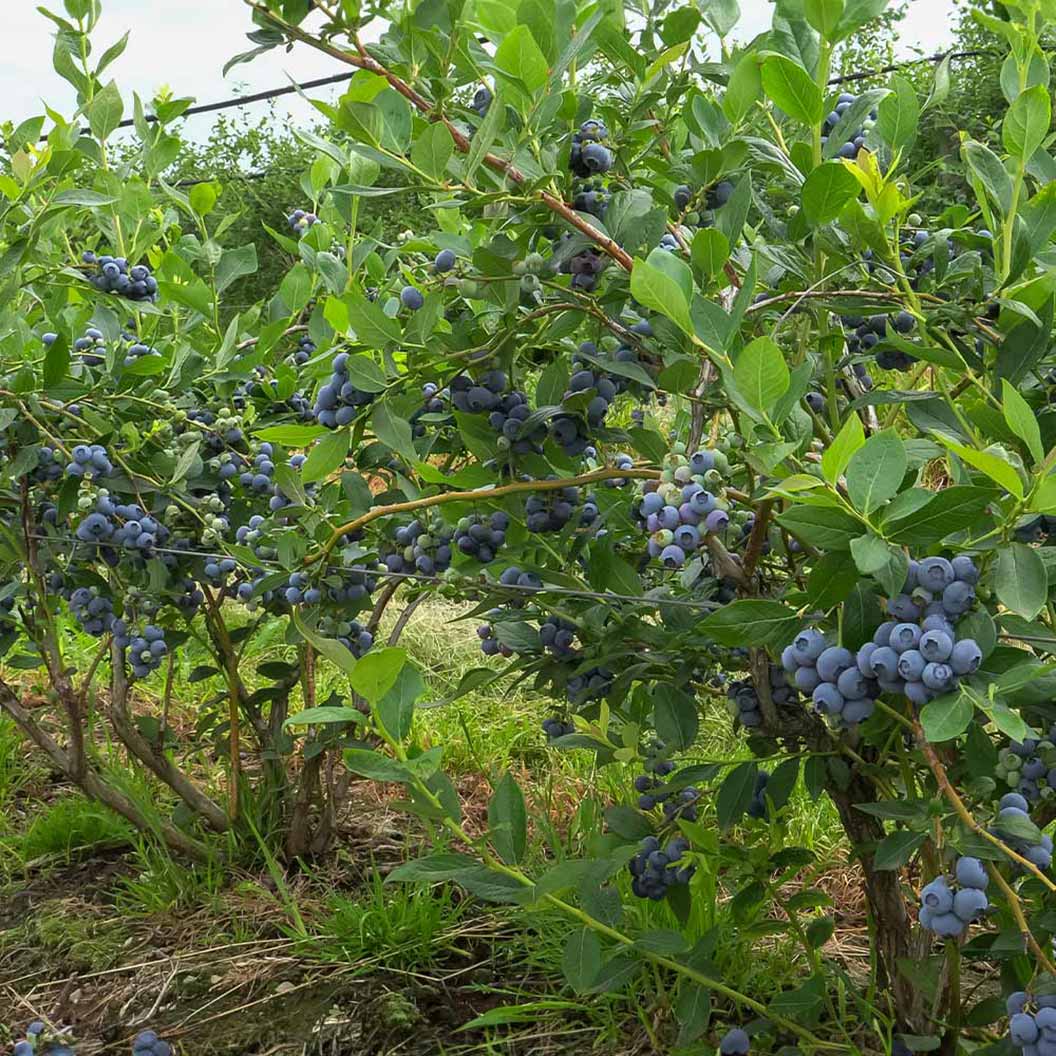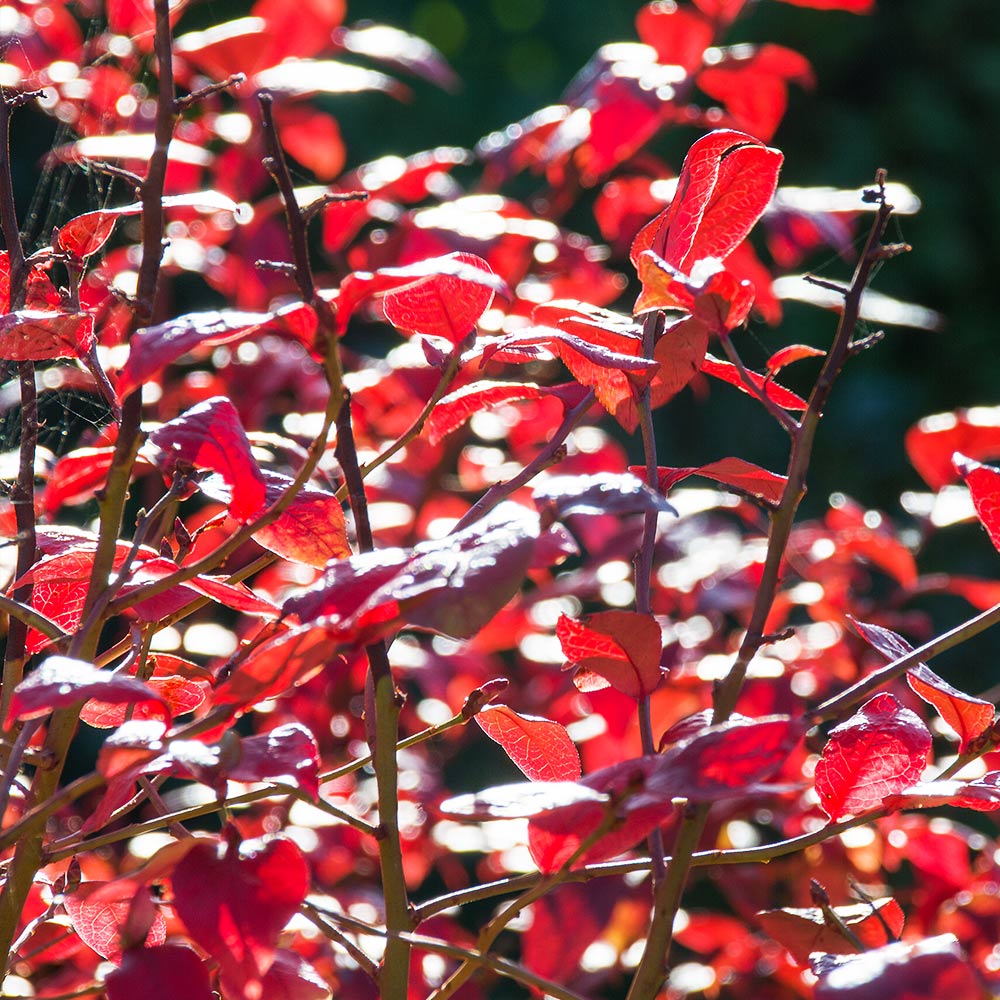Blueberries the size of Nickles
Toro Blueberry bushes are known for being heavy producers... you get buckets of berries every year!
Even after an extremely cold winter, your Toros will produce tons of sweet berries in mid-July.
Fantastic as a border or privacy hedge... the Toro boasts delicate white to hot pink flowers in the spring and fiery red foliage in the fall.
It's even self-fertile! It is not necessary to provide a pollinator for the Toro. However, planting another variety of blueberry alongside the Toro will increase berry production.
These berries are huge! Toro Blueberries are much larger and juicier than typical blueberries you find from the store.
Plant in rows for the best pollination! Groups of three or five yield the biggest crops of berries!
And the health benefits! Full of antioxidants, which help reduce the signs of aging.
These berries are so sweet, it doesn't seem like you're eating healthy... but you are!
Perfect for northern climates.
Planting & Care
The Blueberry is a deciduous shrub. The leaves are spirally arranged, narrow, and start out red-bronze in the spring only to develop into a dark-green. The flowers of the Blueberry are white, and bell-shaped. The fruit is a berry, which is dark blue to black, and has a thin wax coating.
Seasonal information: Blueberries are grown as an ornamental plant for its fall colors, typically bright orange or red. It is also a highly regarded "super food", containing beneficial vitamins and nutrients.
Location: When selecting a site to plant your Blueberry bush, make sure the site has full sun and drains well. The plant grows best in moist soil, not in soggy soil. Blueberry plants require acidic, well-draining soil. When planted in soils with a pH higher than 5.5, blueberry plants do not absorb nutrients adequately and become more susceptible to disease. Blueberry plants contract moisture-related diseases when exposed to humid conditions or standing water.
Planting instructions: Dig a hole with the shovel that is about twice the size of the root ball of the bush. Make sure the hole is the same depth as the container it comes in. When planting more than one blueberry bush, dig holes that are at least five feet apart in rows that are 10 feet apart. Amend the soil from the hole with peat moss. Make sure to thoroughly mix the peat moss with the soil from the hole. Place the Blueberry bush in the hole. Cover the roots with soil-peat moss mix.
Watering: Your blueberry bushes will need to be watered regularly to make certain that the root system becomes well established. The soil surrounding your tree should be moist, but never saturated. Light green leaves can be a sign of over watering, while drooping leaves can be a sign of both over or under watering.
Fertilization: You do not need to fertilize the Blueberry bush at the time of planting. Fertilize the Blueberry bush twice a year, once in the spring and once after harvest.
Weed Control: Hand-pull weeds near the blueberry shrubs. You can damage the shallow root system with garden tools.
Pests and Disease: Blueberries grow best in acidic soil and are subject to few pests and diseases. The Blueberries are not self-fertile, so two compatible varieties should be planted next to each other to maintain growth and fruiting. If maintained with mulching, the berries can handle temperatures as low as 10 degrees Fahrenheit. Blueberries can mature to the height of three to six feet with a width of up to three feet. The plant has few insect or disease problems; however, birds and squirrels are prone to eating them.
Pruning: Blueberries require only minimal pruning. Lower limbs can be thinned out to keep the fruit from touching the soil, and excessively vigorous upright shoots can be thinned out several feet from the ground to keep the center of the bush open, and to keep the bearing surface within reach. Spindly, weak, or dead branches should be thinned out annually during the dormant season.
Pollination: Blueberries are not self-fertile and must have two or more varieties to pollinate each other. Honeybees are inefficient pollinators, and carpenter bees frequently cut the corollas to rob nectar without pollinating the flowers. Blueberries do best when pollinated by buzz pollination by bees, such as the native southeastern blueberry bee.








Comment